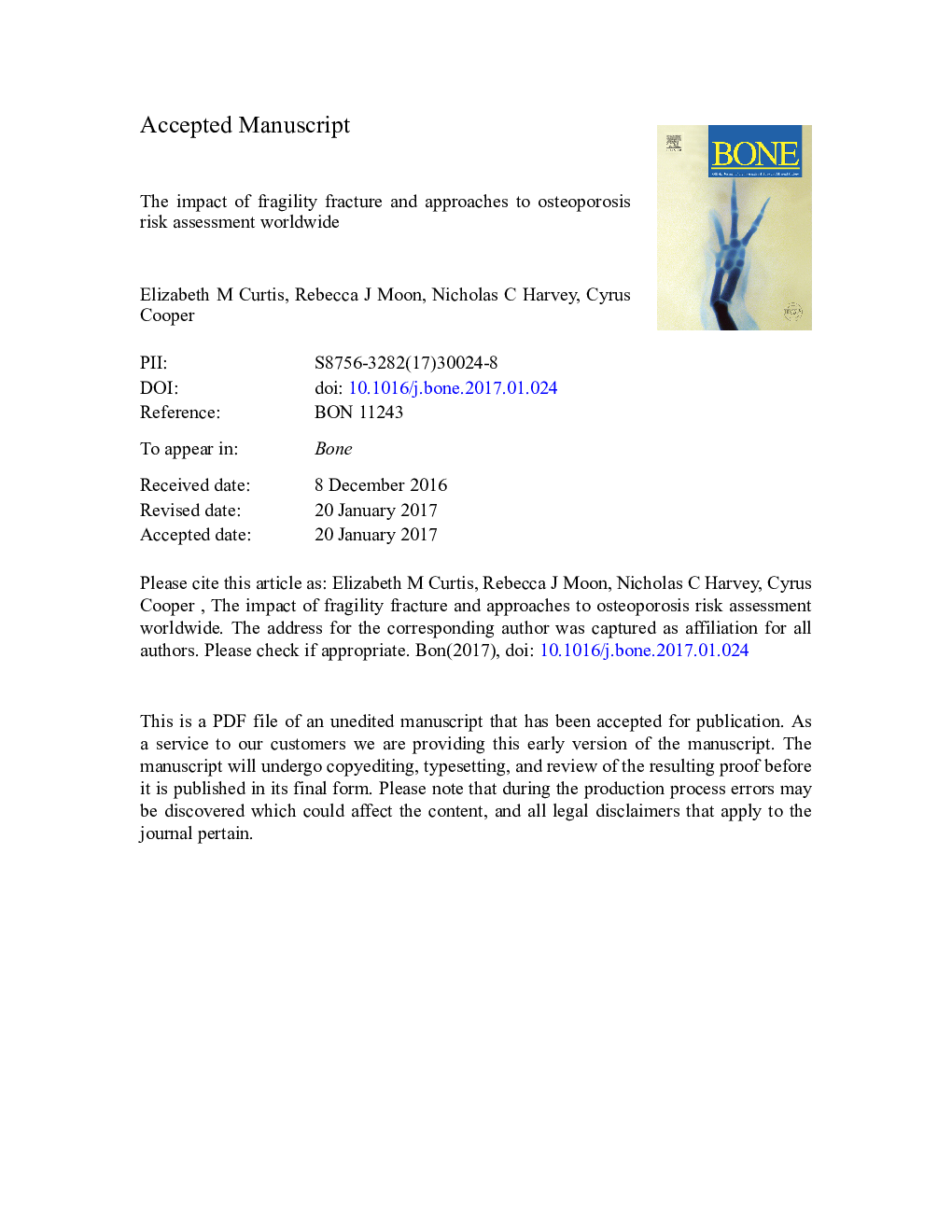| Article ID | Journal | Published Year | Pages | File Type |
|---|---|---|---|---|
| 5585237 | Bone | 2017 | 32 Pages |
Abstract
The WHO operational definition of osteoporosis, based on a measurement of bone mineral density (BMD) by dual-energy X-ray absorptiometry (DXA), has been used globally since the mid-1990s. However, although this definition identifies those at greatest individual risk of fracture, in the population overall a greater total number of fractures occur in individuals with BMD values above the threshold for osteoporosis diagnosis. A number of web-based tools to enable the inclusion of clinical risk factors, with or without BMD, in fracture prediction algorithms have been developed to improve the identification of individuals at high fracture risk, the most commonly used globally being FRAX®. Access to DXA, osteoporosis risk assessment, case finding and treatment varies worldwide, but despite such advances studies indicate that a minority of men and women at high fracture risk receive treatment. Importantly, research is ongoing to demonstrate the clinical efficacy and cost-effectiveness of osteoporosis case finding and risk assessment strategies worldwide. The huge burden caused by osteoporosis related fractures to individuals, healthcare systems and societies should provide a clear impetus for the progression of such approaches.
Related Topics
Life Sciences
Biochemistry, Genetics and Molecular Biology
Developmental Biology
Authors
Elizabeth M Curtis, Rebecca J Moon, Nicholas C Harvey, Cyrus Cooper,
